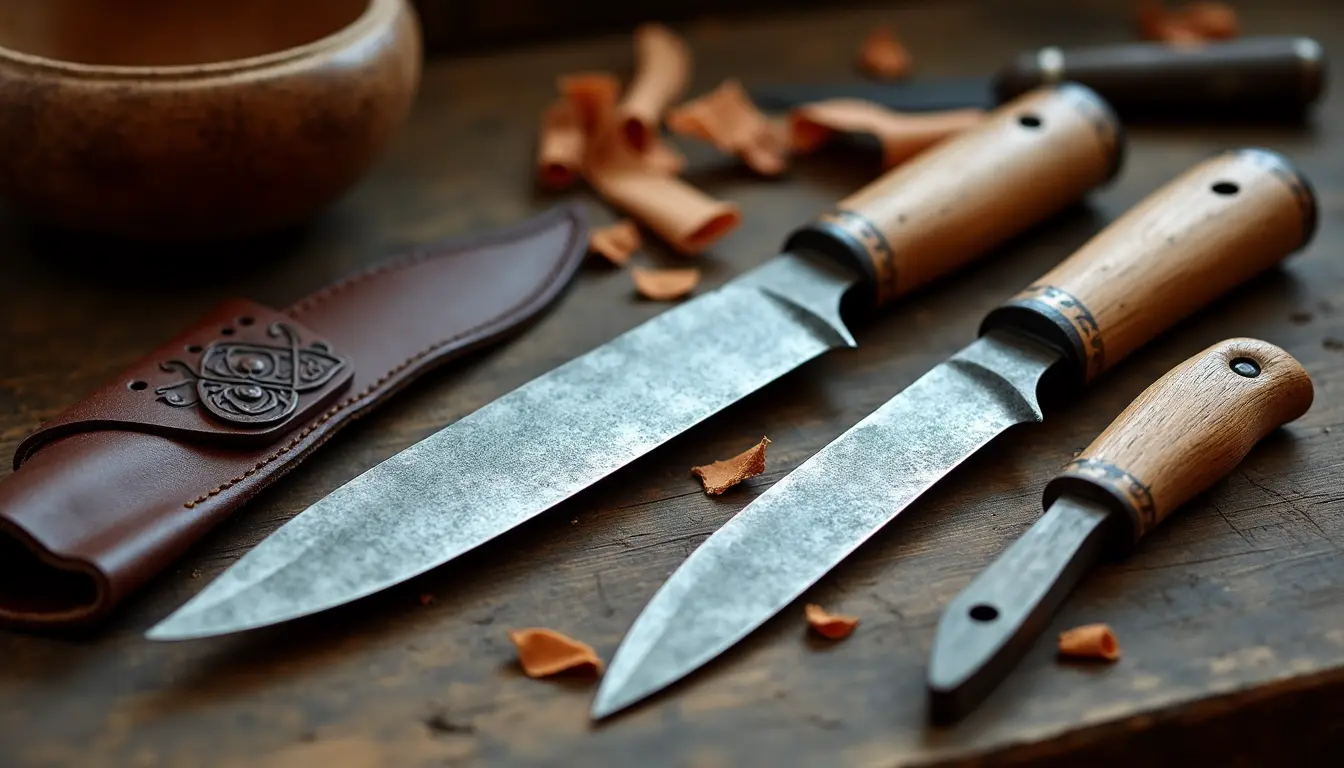

History, Uses & Craftsmanship Evolution
Viking knives were not as common as most people think. Archeological evidence reveals that these tools were used by everyone in Viking society, regardless of age or gender. While many see them only as weapons, these versatile tools had a variety of functions beyond combat.
At the archeological site at Coppergate in York, over 200 Viking knives were discovered, showcasing their diverse nature. From small utility knives to large weapons, these blades were essential for everyday tasks such as cutting, carving, and close combat. The seax, a significant Viking knife type, exemplified this versatility, serving as both a practical tool and a status symbol adorned with intricate carvings and inlays.
The craftsmanship and design principles of Viking knives continue to influence modern knife-making practices. These tools evolved from simple utilitarian designs to symbols of status and craftsmanship that reflected the owner’s social standing.
The seax, in particular, exemplifies Norse ingenuity, serving as a practical tool and cultural symbol during the Viking Age. These versatile blades were used for a wide range of tasks, from food preparation and hunting to shipbuilding and personal grooming. Viking knives held deep cultural significance, indicating social status and practical importance in daily life.
Norse practical thinking is evident in the design of the seax, with skilled craftsmen using multiple layers of iron plates with varying carbon content to create durable and sharp blades. The seax was not only a functional tool but also a spiritual object, as evidenced by ritual weapon deposits found in Viking graves.
Throughout the Norse era, Viking knives evolved from simple iron tools to intricate symbols of status and craftsmanship. Early Viking knives had basic designs with single-edged iron blades, but as time passed, they incorporated decorative elements and complex pattern-welding techniques. Regional variations in Viking knife design were also observed, with different styles emerging in Norway, Sweden, and Denmark.
Trade routes played a significant role in the development of Viking knives, as Norse traders encountered blade-making traditions from various cultures and adopted new techniques. Skilled craftsmen emerged, creating knives with intricate designs and patterns, showcasing both practical use and artistic skill.
Viking blacksmiths were adept at crafting blades using materials like bog iron, high-carbon steel, and pattern-welded bars. Handles were made from organic materials such as wood, bone, antler, and horn, often adorned with intricate designs and engravings. The forging process required skill and patience, with Viking smiths using unique techniques to create durable and sharp blades.
Decorative elements on Viking knives, such as animal motifs and runic inscriptions, held deep cultural significance and reflected the owner’s social status and beliefs. Pattern-welding techniques created visually striking patterns on blades, further enhancing their beauty and functionality.
Viking knives were diverse in design, with different types serving specific purposes such as woodworking, leatherworking, and textile work. The seax, in its various sizes, was a versatile tool used for everyday tasks, crafting, and combat. Viking knives adapted to regional needs, with craftsmen creating blades tailored for hunting, combat, and everyday use.
In modern times, Viking knife-making traditions are kept alive by craftspeople and artisans who combine historical authenticity with new innovations. Sustainable manufacturing practices inspired by Norse principles include the use of bio-based handle materials, recycled steel, and renewable materials. Modern Viking-inspired knives feature high-quality blades and traditional designs, incorporating pattern-welding techniques and customizable features.
The practicality and craftsmanship of Viking knives continue to influence contemporary knife-making, with modern interpretations combining historical elements with advanced technology. These knives are designed for everyday use and specialized tasks, catering to both collectors and practical users. The legacy of Viking knife design lives on, adapting to modern needs while preserving cultural significance and environmental awareness.







